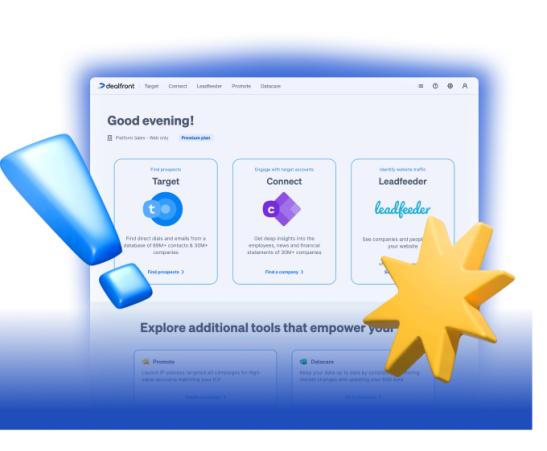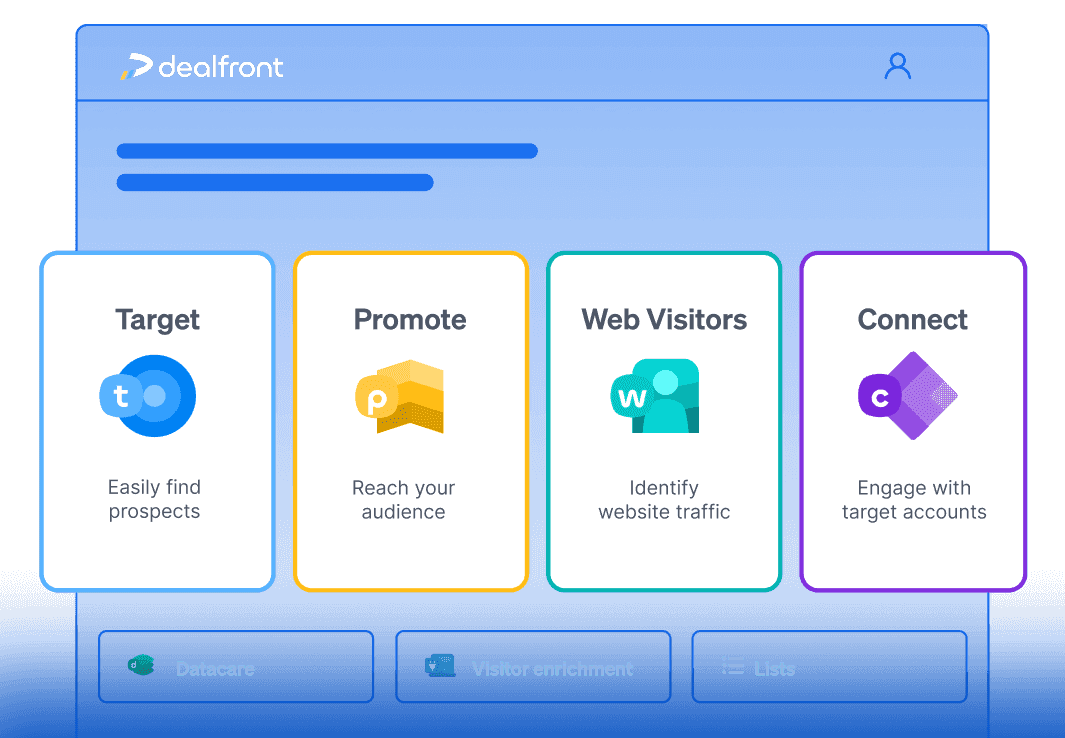Growth marketing is a strategic approach to marketing that focuses on driving sustainable and scalable business growth by increasing customer acquisition, improving retention, and boosting revenue. It involves a data-driven approach, experimentation, and a strong emphasis on measurable results to help improve the overall growth of any business.
The goal of growth marketing is to provide insights into customer preferences and pain points, giving marketers information to target their audiences better and drive business growth. This knowledge helps the company achieve sustainable and scalable growth by identifying and leveraging the most effective marketing channels, tactics, and strategies. This proves more important than ever in the modern market that is constantly changing to adapt to shifting customer demands.
Because growth marketing focuses on experimentation, growth marketers make data-driven decisions. Results from experiments help them know what works and what doesn’t, enabling constant campaign adjustments based on tried and tested facts.
In this piece, you’ll get insights into:
How growth marketing works and the easy way to implement it in your business
The differences between growth and traditional marketing
Best practices for effective growth marketing
Real-world case studies of companies executing growth marketing best practices in campaigns.
Understanding the basics of growth marketing
Before we delve into the best practices you can use to boost your growth marketing strategy, let's first outline the fundamentals of this marketing type. Understanding what growth marketing is and how it works can help you make more informed and effective business decisions.
What is growth marketing?
Growth marketing is a data-driven, experimentation-based approach to increasing business growth. Growth in this context could mean more revenue, extra leads, or increased brand awareness.
This type of marketing shifts the conversation from “How do we attract prospects?��” to “How can we retain acquired customers longer?” It uses insights gained through marketing campaigns to:
Build customer relationships
Reduce churn
Increase customer lifetime value
Additionally, growth marketing aims to generate more than one-off results. It’s not just about putting an irresistible offer in the hands of a customer and then watching revenue explode over the weekend. Instead, it’s a long-term play that involves:
Rigorous testing of what works and what doesn’t by creating hypotheses, testing them, making edits, and retesting
Learning quickly from patterns
Adapting effectively
Growth marketing embraces the trial-and-error approach, meaning, marketers run their campaigns with an experimental mindset. And then, they leverage data to streamline the entire customer journey—not just the top of the funnel. The goal is the long-term, sustainable growth of startups and growing brands.
Growth marketing vs. traditional marketing
You may wonder how growth marketing is different from traditional marketing. Traditional marketing focuses on improving lead generation and client acquisition. However, it doesn’t concern itself with what happens after a prospect makes the first purchase.
On the other hand, growth marketing focuses on guiding potential customers through the entire customer journey. It steers them from awareness to retention and beyond.
Growth marketing aims to attract, engage, and make prospects return customers. The goal is to create loyal brand ambassadors instead of one-time buyers. Growth marketing achieves that through excellent customer experience.
As traditional marketing emphasizes customer acquisition, growth marketing focuses on customer retention. You could also say that traditional marketing is generally company-centric, growth marketing is customer-centric.
Key components of growth marketing
Growth marketing seeks to extend and expand upon traditional marketing-benefiting both you and your business. But what does that look like?
Key components of growth marketing include:
Acquisition concentrates on streamlining how prospects discover your brand or products. Here, companies focus on strategies for increasing visibility, including search engine optimization (SEO), content marketing, advertising, and creating a presence on social media platforms where prospects congregate.
Activation involves helping your target audience to take the next steps after their first encounter with your brand. Examples include signing up for a free trial and subscribing to your newsletter.
Retention involves monitoring prospects engaging with your company after being “activated.” It also comprises the implementation and optimization of loyalty programs. These efforts help maintain engagement and decrease acquisition costs. As a result, e-commerce and SaaS brands can increase their customer lifecycle.
Referral focuses on encouraging customers to spread word of mouth about your products. Growth marketers looking to increase referrals use incentives like discounts and free upgrades.
The revenue stage involves optimizing revenue generation. It includes testing pricing strategies, upselling techniques, and payment methods to skyrocket revenue.
Best practices for effective growth marketing
Here are growth marketing best practices to streamline your strategy and get the most out of your B2B marketing campaigns.
Data-driven decision making
Successful growth marketing campaigns don’t rely on instincts or guesswork. Concrete data and test results should be at the heart of your actions and strategic moves. Basing your campaign on robust data leads to more accurate insights and fast decision-making.
Also, data plays an essential role in customer acquisition and retention. For instance, growth marketers can create highly targeted campaigns that address the needs and interests of prospects by collecting and analyzing customer behavior and preferences.
You should leverage the power of tools to collect and analyze data.
Here are 3 types of tools you can use:
1. Website data collection tools
Google Analytics can help you review web visitors’ demographic and geographic characteristics. Engagement data like traffic source, page views, time on page, and bounce rate, are also available to improve low-converting web pages on your website.
Use advanced tools like Leadfeeder gain insights on the companies visiting your website. Leadfeeder helps you identify which growth initiatives are attracting and engaging companies from your ICP on your website. For example, you can track company behavior, gain insights into their interests, and use that data to set your sales team for effective prospecting.
2. Social media listening tools
Use social media listening tools to monitor, track, and analyze social media conversations concerning your company. For instance, you can monitor direct mentions of your brand and discussions related to a topic, industry, or competitor.
Gathering data through social listening and analyzing helps you determine the best ways to improve your social media strategy and presence. Popular social media listening tools include Sprout Social, BuzzSumo, Hootsuite, and Buffer.
3. Data analytics tools
Data analytics tools track and analyze data before presenting actionable reports and dashboards. By helping growth marketers understand data analytics, these tools are essential in making better decisions about how to price products and where to allocate digital marketing resources. Examples include Microsoft Power BI, Zoho Analytics, Tableau, Klipfolio, and Looker. After collecting and analyzing data, let the information be the guiding compass of your growth marketing strategy. Use it to make data-driven decisions and expect massive results in return. Businesses have proven time and time again that data-driven decisions are positively effective.
So, let’s take a look at a real-world scenario:
How Dropbox used and won with data-driven decision-making in growth marketing
Dropbox is a cloud storage service provider. Before implementing growth marketing efforts through its referral program, the organization spent between $233 and $388 on paid ads to acquire one new customer. Surprisingly, the new customer only generated annual revenue of $99 for the company.
Dropbox’s leaders knew that those numbers were not sustainable. So they dug into their data and realized that over 30% of Dropbox customers came from referrals. Leveraging this insight, the company started giving extra file storage to current and new users who participated in its referral program.
The results? In less than two years after making that data-driven decision, Dropbox grew from 100,000 users to four million without spending on ads or other paid promotions. This is a classic example of how growth marketers can use data to make decisions and drive sustained growth.
Experimentation and A/B testing
When result-driven growth marketers design call-to-action buttons, write email copy, or design landing pages, they don’t rely on intuition to anticipate what will make customers click and connect. Instead, they conduct experiments and A/B tests to discover the best method to optimize their marketing plan and maximize conversion.

With A/B testing, you create two variations of a piece of marketing content and share it with different segments of your target audience to determine which version performs better. The goal is to test how version A of something compares to version B of the same thing.
For example, you can email half of your selected contacts with the subject line A. Then send the same email with subject line B to the remaining half. After a specific timeframe, the subject line with the most open rates wins the contest.
Some of the things you can A/B test in growth marketing include:
Ads (copy, images, and color used)
Website landing pages and call to action
Marketing emails (subject line, body content, call to action, and links used)
Note: Be sure to choose specific key performance indicators to measure performance after the tests.
A/B testing in action: Thrive Themes finds the best fit
Thrive Themes wanted to optimize its sales page. Initially, the company used a banner highlighting product features on its landing page without testimonials. Thrive Themes decided to test whether having testimonials on its sales page could improve conversion rates.
The organization ran a 6-week A/B test with two versions of the sales page. Variant A of the experiment was the original sales page without testimonials. Variant B had two testimonials as the only difference compared to variant A. The sales page variants went to a random 50-50 distribution of web visitors.
The results were quite revealing. The version with testimonials got a higher conversion rate (2.75%) than the one without (2.2%). Additionally, overall sales increased by 25%.
The key takeaway?
Never base your marketing decisions on instincts, feelings, or guesswork. Successful growth marketers rely on tried and tested solutions. So experiment, gather meaningful insights from the tests, and use the collected data to improve your campaigns and products.
Customer retention and loyalty
Most agree that retaining a customer is cheaper than acquiring a new one. Specifically, acquisitions cost a business six to seven times more than keeping existing customers.
Investing in strategies to retain your current customers translates to a massive revenue boost. According to Hubspot, increasing customer retention by 5% can skyrocket revenue by 25–95%. That’s because retained and loyal customers spend more and buy more often than new ones. They are also more likely to recommend the business to others.
These figures justify the significance of improving customer retention. And there are many ways to achieve that:
Implement a customer loyalty program: Properly designed and managed, loyalty programs can unlock significant value that turns customers into loyal fans. For instance, Starbucks attributes 55% of its US operating revenue to its Rewards Program. The program creates value for customers through benefits like free drinks on a member’s birthday. Customers also earn rewards (stars) they can redeem for free drinks, food, and merchandise.
Create a positive customer experience: About 94% of customers are more likely to buy from the same company after a positive user experience. So, remove friction in customer touchpoints. Ensure your website is fast and easy to navigate. Additionally, serve customers across social channels where they are engaging. Make sure customer experience is consistent in all those marketing channels.
Example of a loyalty growth strategy
Companies increasingly use customer retention strategies, like loyalty programs, because they work. Take Sephora’s Beauty Insider, for example. It’s a loyalty program that has gained significant popularity since its launch in 2007. Customers earn rewards for each purchase and can choose how to use the reward points.
People can redeem rewards for gift cards and discounts to offset purchase prices. The program offers so much value that it has over 25 million loyal members who make up as much as 80% of Sephora’s annual sales.
Personalization and targeted marketing
Businesses that understand customer behavior and prioritize personalized marketing can deliver tailored experiences that prospects truly care about. Eventually, this will increase customer acquisition and skyrocket retention.
Personalized growth marketing ensures that highly targeted campaigns meet individual customers’ interests, preferences, and needs. This helps you reach an audience with a genuine interest in your offer.
How Hulu successfully personalized their marketing
Unsurprisingly, personalization is a priority for most B2B brands. Hulu is a good example of brands that have ramped up their personalization. The streaming platform gathered huge amounts of customer data, such as what people watch and when they stream movies, to provide the most accurate recommendations. Hulu used the information to create a curated feed of personalized content for each user rather than recommending a random list of shows.
How to implement growth marketing in your business
Now that you understand growth marketing best practices, how exactly do you implement them in your business?
Build a growth marketing team
A growth marketing team helps a business use data-driven strategies to acquire, convert, and retain customers efficiently. Typically, it comprises people with marketing, data science, analytics, design, and technology expertise. Examples of roles in a growth marketing team include:
Growth marketing manager: This position involves managing activities across all stages in the customer journey, including customer acquisition, activation, retention, and up-selling. This person is the leader of the team.
Growth marketer: The person in this role can also be called a growth hacker, performance marketer, or growth scientist. Responsibilities include developing new strategies and evaluating existing ones to identify improvement opportunities. Growth marketers also engage in A/B testing, experimentation, and collaboration with sales and marketing teams to brainstorm growth campaigns.
Data analyst: This person collects and analyzes data across growth marketing campaigns to help team members and leadership make informed decisions.
When building your team, you want someone with a good understanding of most marketing facets and profound knowledge in one or more areas. The skills to look for in growth marketing team members include:
Data analysis
Solution-focused
Critical thinking
Experimental skills
Creative/visual design
Choose the right tools for growth marketing
The marketplace is rich with marketing tools, giving businesses dozens of options when looking for software. When shopping for the right solution, consider the one that fits your workflows and growth needs.
A few popular growth marketing tools include:
Lead enrichment tools help you better understand your leads and provide valuable information for reaching them. For example, Datacare helps B2B brands review, cleanse, enrich, and optimize the data records of customers.
Sales prospecting tools like Target help create company profiles and lead lists. The tool allows you to access contacts of prospects that match your company’s ideal customer profile, which can help increase sales opportunities. However, not all sales prospecting tools are created equal, so do your due diligence and choose the one that meets your needs.
Website tracking tools assist in understanding and interacting with your website visitors in real time. You can track their behaviors on your site, gain insights into their interests, and use the data to improve prospecting in your business. Leadfeeder is an example of such a tool.
SEO (Search engine optimization) tools optimize content for search engines like Google. They can aid in keyword research, keyword optimization, and detecting technical website issues. Examples include Ahrefs, Clearscope, and Semrush.
A/B testing tools help you design, automate, and analyze experiments in your growth marketing campaigns. Examples include Google Optimize, AB Tasty, and Adobe Target.
Email marketing and automation tools help you build lists, create campaigns, and deliver the message to your audience. Examples include Mailchimp, Constant Contact, and ActiveCampaign.
Examples of successful growth marketing
Earlier, we took a look at Dropbox to talk about what successful growth marketing can look like. The company had a problem acquiring new customers affordably (paid ads were so expensive). However, by investing in a referral program, the company's customer base grew from 100,000 to millions in just 15 months.
Miro, a digital whiteboard tool, is another good example. The company leverages growth marketing strategies to personalize and streamline onboarding.

Image source: Miro
When using the tool for the first time, users get questions about their team, role, company, and how they’ll use Miro. Based on the users’ answers, Miro recommends the best templates to get started with quickly.
That way, people start using the tool immediately and finish their initial project quickly. As a result, the company increases the chances of retaining new users.
How you can move forward with growth marketing
In a nutshell, growth marketing focuses on making customers spend more at one time or buy more often from a business, which boosts customer lifetime value. It achieves that by building long-term customer relationships as we mentioned before. But, for these growth marketing strategies to work, you must implement them correctly.
Growth marketing strategies like prioritizing customer retention generate better results than traditional marketing practices. Once you implement the strategies that truly serve your customers, and make sure they continue to serve them when their needs change, there should be no barriers for your business growth.







